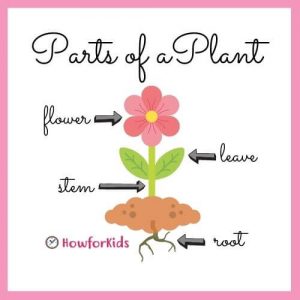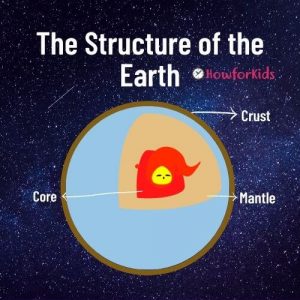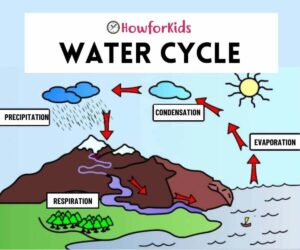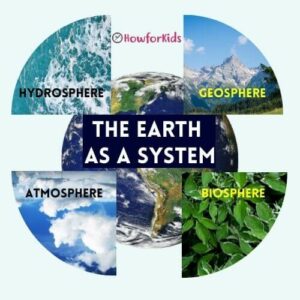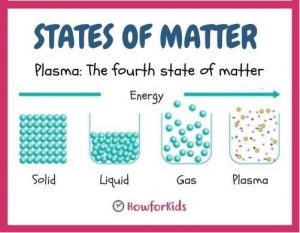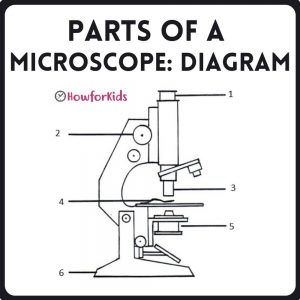Planet Earth is surrounded by air. This air is called the atmosphere. Since ancient times, our ancestors wondered where this air that we breathe came from. In this article, we are going to explain the layers of the atmosphere and how we can take care of it.
What is Air?
Table of Contents
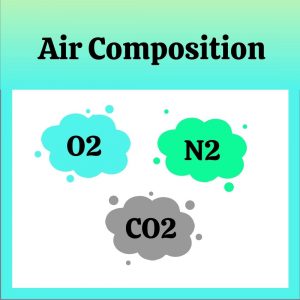
All living things need air. Animals and plants would die without it. Air consists of a mixture of gases: Nitrogen, oxygen, water vapor and a small portion of other gases such as carbon dioxide.
Air Properties
The composition of air varies, depending on the layer of the atmosphere. Air is considered a vital natural resource. At the level of the earth’s surface, it allows life. Oxygen is part of the breathing process of living beings. During respiration, carbon dioxide is released. This is similar to the combustion process, when an object burns. Carbon dioxide is used by plants in photosynthesis to produce their food (they take carbon dioxide by releasing oxygen).
Read also: Plants and Photosynthesis
What is the Air Composition?
The Composition of Air. Air is made up of: Nitrogen (78.084%), Oxygen (20.946%), Argon (0.934%) and Carbon Dioxide (0.033%). There are also other gases present in the atmosphere such as water vapor and ozone. It also contains dust particles, small organisms, and sea salt. Sometimes the particles form highly polluting mists.
Importance of the Earth’s Atmosphere
The Earth’s atmosphere is an envelope of gases whose thickness is not uniform. In its thickest part it reaches 300 miles thick. The atmosphere is essential for life on planet Earth.
Function of the Atmosphere
- It acts as a filter for harmful radiation that, if it reached Earth, would cause significant damage to living beings.
- It is also a “shield” for meteorites. These are rocky bodies that come from space, which disintegrate when “colliding” with the air. The atmosphere slows them down, because it puts up resistance.
- It provides the gases that living beings need.
- The atmosphere regulates the temperature of the planet and determines the weather and climate.
Atmosphere Layers Diagram
The Earth works as a great system, in which its parts, or subsystems, are related to each other. This means that they depend on each other and influence each other. The atmosphere is one of the Earth’s spheres.
Definition of Earth’s Spheres: Earth Subsystems

Studying the world as a whole is complicated. The spheres are the four subsystems that make up the planet Earth. Everything in Earth’s system can be placed into one of four major subsystems: land, water, living things, or air.
Earths Spheres for kids
The four spheres are the geosphere (all the rock on Earth), hydrosphere (all the water on Earth), atmosphere (all the gases surrounding Earth), and biosphere (all the living things on Earth).
Each of these four spheres can be further divided into sub-spheres.
Any change in one of them affects the rest. They maintain a relationship of constant exchange. Human beings have a responsibility to maintain that balance.
Biosphere
Bio means “life”. The biosphere is made up of all the living things on Earth and it includes fish, birds, plants, and even people. The biosphere is the system formed by the set of living beings that inhabit Planet Earth and develop in the other subsystems.
Hydrosphere
Hydro means “water“. The hydrosphere includes the oceans, rivers, lakes, groundwater, and water frozen in glaciers. Without water, life would not be possible. 97% of the water on planet Earth is salty. For this reason, we must take care of the water, not pollute it, or waste it. Water is one of the most important substances needed for life and makes up about 90% of living things. Learn more about the water cycle for kids here.
Geosphere
Geo means “earth.” The Earth’s geosphere (sometimes called the lithosphere) is the portion of the earth that includes rocks and minerals, made up of the earth’s crust (continents, bottom of the oceans) and the interior of the earth (mantle and core).
Atmosphere and its relationship with Earth’s Spheres
The Atmosphere shares components with the other subsystems.
Read also: The Spheres of the Earth for Children
What is the Function of the Atmosphere?
It maintains the amount of oxygen, which is provided in part by algae and plants in the biosphere, in photosynthesis. This oxygen is essential for respiration.
In the atmosphere is where clouds form, which are condensed water vapor that will give rise to the rains. The humidity of the air, which is in the gaseous state, during the water cycle, transforms into a liquid state, interacting with the hydrosphere.
These processes take place on the earth’s surface, which is part of the geosphere.
Layers of the Atmosphere and its Characteristics
As we move away from the Earth’s surface, the atmosphere exhibits different characteristics. To study it, it is divided into layers: It is made up of 5 different layers:
Layers of the Atmosphere in Order
- Troposphere.
- Stratosphere.
- Mesosphere.
- Thermosphere or Ionosphere.
- Exosphere.
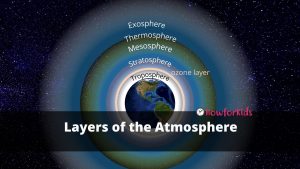
Structure of the Atmosphere
Which layer of the atmosphere contains life?
1. Troposphere
The troposphere is the layer where life develops. The first layer of the atmosphere and the one closest to the earth’s surface. It is the air that is in contact with the surface of the Earth. It is very sensitive to the processes that occur at this level, such as evaporation from the oceans and the water cycle, photosynthesis in plants, respiration of animals, and human activities.
It extends from the surface or sea level, up to approximately 1-8 miles (8-14 km) high. It is where life develops on the planet. The temperature and the atmospheric pressure decrease as we increase the altitude until reaching -94 º F (-70 ° C).
Troposphere Characteristics
Meteorological phenomena (rains, winds) develop in this layer, so airplanes avoid flying in this layer. In the highest part of the troposphere, we find the tropopause. It is the transition zone between the troposphere and the stratosphere located between about 5 miles (9 km) high at the poles and 11 miles (18 km) at the equator. It marks the upper limit of the troposphere, where temperature generally decreases with height.
2. Stratosphere
It is the second layer of the atmosphere. It is located above the troposphere, and below the mesosphere. The word “stratosphere” derives from the word “stratum” which means layer, and from the word “sphere” which refers to the shape of the Earth. It begins from the tropopause and reaches an upper limit (stratopause), between 9 and 30 miles (15 and 50 km) high. It contains ozone.
What is the Ozone Layer and What’s its Function?
Which layer of the atmosphere contains the ozone layer?
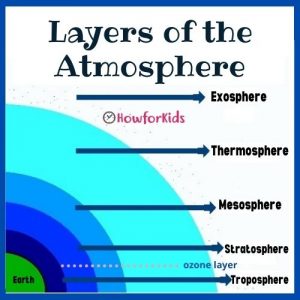
Where is Ozone Layer?
How do you explain the Ozone Layer?
The term “ozone layer” describes the area of greatest concentration of ozone molecules in the stratosphere. Between 85 and 90% of all ozone in the atmosphere is in the stratosphere. This layer envelops the planet like a bubble and acts as a filter against the harmful ultraviolet (UV) radiation produced by the Sun. Ozone is a highly reactive molecule that contains three oxygen atoms (O3). It is formed by the decomposition of molecular oxygen (O2) by the action of sunlight, giving rise to new oxygen atoms (O2). These oxygen atoms react with more molecular oxygen to form ozone.
What is the Function of the Ozone Layer?
The Earth is surrounded by the ozone layer that is approximately 50 km high. The function is to protect living beings from the ultraviolet (UV) rays of the Sun. Currently, there is a great concern because the ozone layer is decreasing. This is because of the pollution caused by the chemical’s chlorine and bromine. This deterioration of the layer allows large amounts of ultraviolet B rays to reach the Earth. This excess UV rays can cause skin cancer and cataracts in the eyes of human beings and harm animals.
Why is the Ozone Layer Important?
Excess UV rays also have negative effects on organisms in the aquatic environment. Inhibits the phytoplankton cycle. They are single-celled organisms (like algae) that make up the last link in the food chain. It is feared that the reduction of phytoplankton will cause a decrease in the population of other animals. And it changes the reproductive rate of young fish, prawns, crabs, frogs and salamanders that are exposed to an excess of ultraviolet B.
Ozone and oxygen molecules in the stratosphere absorb ultraviolet light that comes from the Sun, forming a “shield” that prevents radiation from reaching the Earth’s surface.
When this layer diminishes, the risks increase considerably. The areas of the ozone layer that show the most damage is known as “ozone holes” or ozone depletion.
What is the Ozone Layer? Ozone Depletion
In the stratosphere, there is almost no movement of air in the vertical direction. But, winds in a horizontal direction can reach up to 125 miles/h (200 km/h), causing any substance that reaches the stratosphere to be diffused throughout the planet. The lower limit of the stratosphere is called the tropopause and its upper limit is called the stratopause. It is an area of the atmosphere where high concentrations of ozone end and the temperature becomes very stable (above 0 ° C). The stratopause is the one that gives way to the mesosphere.
3. Mesosphere
It is the third layer of the Earth’s atmosphere that extends between 30 and 50 miles (50 and 85 km) in height. The temperature in the mesosphere, is similar to the troposphere, descends in altitude. This layer of the atmosphere is the coldest of all. And the thinnest as it only contains 0.1% of the total air mass. The mesosphere is a protective layer that protects us from the celestial rock masses that enter the atmosphere. It is capable of stopping meteorites, destroying them before they can reach the earth’s surface. Burn as a result from friction with the air, generating the “shooting stars”. The northern lights occur in the mesosphere. The stratopause is the boundary between the mesosphere and the stratosphere. At the end of the mesosphere is the mesopause. It is the boundary layer that separates the mesosphere and the thermosphere. It is located about 50 and 55 miles (85-90 km) high and in it the temperature is stable and very low. The Northern Lights and the Southern Lights take place in this layer.
4. Thermosphere
This fourth layer extends from a height of almost 50 miles (80 km) above the earth’s surface to 400 miles (640 km) or more. At these distances, the air is extremely thin. It is charged with electricity, allowing it to transmit radio waves. The waves leave the Earth, bounce off this layer and return to different points on the surface. This last effect allows the reception of radio signals at much greater distances. There are also glows of light called polar auroras. The thermosphere is the hottest layer of the atmosphere.
5. Exosphere: Features
This last layer of the atmosphere is what separates the planet Earth from outer space. It is composed mostly of hydrogen. It is the boundary between outer space and the Earth’s atmosphere. There is practically no air there. Spacecraft and artificial satellites pass through there. This is the layer farthest from the earth’s surface and due to its height, it is the most indefinite. More or less, it extends between 350-500 miles (600-800 km) in height to 6,000-6,200 miles (9,600-10,000 km).
How was the Atmosphere formed? The Earth’s early Atmosphere
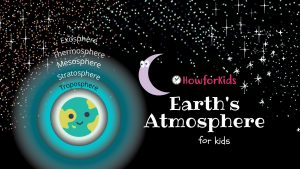
The atmosphere of the planet was not always as it is today. It is believed that the primitive atmosphere did not contain oxygen. In principle, we can say that the Earth’s atmosphere began to form about 4.6 billion years ago with the birth of the Earth. And the oxygen … When did it appear?
Primitive Atmosphere. The Evolution of the Earth’s Atmosphere
The primitive atmosphere is the one before the Precambrian (a long period in the evolution of the Earth that spans from the formation of the planet), when life did not yet exist. It is said that it was reducing, this means that it did not contain free oxygen, it only had ammonia, methane and hydrogen. UV rays passed, because ozone did not exist. When Earth was formed from a hot mixture of gases and solids, it had almost no atmosphere. It is generally accepted that the early atmosphere, about 4.4 billion years ago, was very thin, almost completely lacking in oxygen.
Where did the Atmosphere come from?
- In the first stage, as the Earth cooled, an atmosphere began to form mainly from gases emitted by volcanoes. It included hydrogen sulfide, methane, and 10 to 200 times more carbon dioxide than today’s atmosphere. The Earth released by volcanoes and earthquakes, the gases that it had inside, together with the water vapor, formed the Primitive Atmosphere.
- In the second stage, after about 500 million years, the surface of the Earth cooled and solidified enough for water to accumulate on it. As the Earth cooled, the water vapor condensed and after a great rain that filled the depressions of the planet, the oceans were formed.
- In the third stage, 3.4 billion years ago, microscopic blue-green organisms called cyanobacteria in Earth’s oceans created oxygen. They used sunlight from carbon dioxide, water by a process called photosynthesis. As these very ancient organisms multiplied, they created more dissolved oxygen in the water.
- In the fourth stage, about 430 million years ago, the atmosphere similar to the one we have today was formed, life appeared on earth. From the water, the oxygen passed into the atmosphere and there another gas called ozone was formed. The ozone layer blocked the deadly radiation from the Sun. This allowed life to develop on the earth’s surface. Small plants and invertebrates (animals without backbones) developed the ability to live on land and use oxygen directly from the atmosphere. Plants evolved, as did the first four-legged animals. As the atmosphere changed, so did Earth’s temperatures.
What keeps the Earth’s temperature stable?
Solar energy that reaches the Earth’s surface passes through the atmosphere in the form of radiation: Infrared and Ultraviolet (UV). By the process known as the Greenhouse effect, the surface absorbs part of the radiation and another part flows into outer space. Well, the Earth does not radiate all infrared radiation, part of it is absorbed by carbon dioxide and water vapor. It accumulates in the form of heat and increases the temperature of the earth. In contrast, the ozone layer absorbs almost 90% of ultraviolet radiation.
What is the Greenhouse Effect?
The greenhouse effect is a natural phenomenon, by which the temperature of our planet is regulated. It is fundamental to life. Otherwise, the average temperature would be around -0.4 º F (-18 ° C). However, human activities such as the burning of fossil fuels and the indiscriminate felling of trees have intensified this natural phenomenon, causing global warming.
What is Global Warming? Definition of Global Warming
When the proportion of gases that make up atmospheric air changes, it alters. Water vapor and carbon dioxide cause the greenhouse effect. The increase in these gases causes the temperature of the Earth to increase. When their concentration increases, these gases accumulate and form a layer in the atmosphere, which prevents heat from flowing into space. The heat is concentrated and does not come out. Over time, as a consequence, the average temperature of the planet increases. This alters the climate, which could also cause glaciers and polar ice caps to melt. This would raise the level of seas and oceans causing serious catastrophes.
Causes of Global Warming: Air Pollution Effects
How does air pollution affect earth’s climate?
Human beings are responsible for global warming. Global warming is caused by the greenhouse effect. They increase the greenhouse gases in the atmosphere and the temperature rises. These gases (mainly: carbon dioxide and methane) are found naturally in the atmosphere, and retain the heat emitted by the surface. They are called GHG – Greenhouse Gases. With the industrial revolution, the concentration of these greenhouse gases increased. Especially because of the felling of trees, the growth of the industry and the use of fossil fuels.
Best Ways to Reduce Air Pollution
Human activity is changing the composition of the atmosphere, causing the greenhouse effect (by increasing carbon dioxide or methane), and causing acid rain (nitrogen oxide). According to the US Environmental Protection Agency, one chlorine atom can destroy more than 100,000 ozone molecules.
- Do not use aerosols or sprays because they contain chlorofluorocarbon compounds (CFCs). They are chemical substances found in spray aerosols, which are mainly responsible for the deterioration of the ozone layer. When CFCs reach the upper part of the atmosphere, they are exposed to ultraviolet rays and break down into substances that include chlorine. Chlorine reacts with oxygen atoms in ozone, destroying the ozone molecule.
- Turn off lights and electrical appliances when you’re not using them and use energy-saving light bulbs.
- Take care of the consumption of hot water. Energy is required for heating.
- Do not throw garbage in public places or in water sources. When it rains, the water carries away the garbage, plugging the drains and sewers causing flooding in the streets. When it is very hot, the garbage rots and gives off bad odors. Chemical waste remains on the surface, which mixes with the vapor that pollutes the atmosphere.
- Do not use fire extinguishers that contain substances that are harmful to the ozone layer.
- Buy CFC-free insulation material. The dark agglomerated cork can fulfill the same function and does not affect the ozone layer.
- Keep the maintenance of the air conditioning up to date, otherwise you will allow the CFC to reach the atmosphere. The same with the air conditioner in the car.
- Check that the refrigerator is cooling properly. It may leak.
- If you know fields or crops that use products with methyl bromide, report it, as they are highly polluting.
- Use the car as little as possible. Look for alternatives such as cycling or public transport.
- Recycle glass, paper, plastic.
Layers of the Atmosphere Facts
Why do planes fly in the stratosphere?
The warm air loaded with humidity rises, and the cold air descends, therefore, winds, clouds and precipitation form in the troposphere. Due to local variations in temperature and air pressure, these winds can be erratic, and even extreme. In contrast, in the stratosphere, conditions are more stable, since the air pressure is much lower and the warm air prevents the formation of convection currents. There is practically no turbulence, the winds are stable and blow in a horizontal direction. Commercial jets fly in the lower stratosphere to avoid turbulence.
Atmosphere is divided into different layers depending on how temperature changes.
In both the mesosphere and the troposphere, the temperature generally decreases as the altitude increases. However, in the stratosphere and in the thermosphere, temperature increases, with altitude.
Which is the hottest layer of the atmosphere?
The thermosphere is the hottest layer of the atmosphere.
Which is the coldest layer of the atmosphere?
Mesosphere is the hottest layer of the atmosphere.
Which is the outermost part of the Earth’s atmosphere?
Exosphere is the outermost part of the Earth’s Atmosphere.
In which layer of the atmosphere is ozone found?
The ozone layer is found in the stratosphere.
What’s the difference between stratospheric and tropospheric ozone?
In the stratosphere, ozone molecules play a very important role. They absorb ultraviolet radiation from the Sun and protect the Earth from its harmful rays. In contrast, in the troposphere, near ground level, ozone molecules are air pollutants and act as greenhouse gases. It comes from vehicle exhaust and emissions from factories, power plants and refineries. They trap heat and contribute to climate change.
The Polar Auroras (Boreal and Austral) of the mesosphere. In this layer the Northern Lights are generated, which is a glow in the night sky of the polar areas, so attractive for tourism.
The mesosphere is the coldest atmospheric layer, it can reach temperatures of up to -100 ° C.
Three billion years ago, the Sun was only 70% bright as it is today. The Earth should have frozen, but it didn’t. Why not? Due to the greenhouse gases in the atmosphere, mainly methane and carbon dioxide. These gases trapped enough heat from the Sun to maintain temperatures from freezing.
Read also: The Microscope for children
